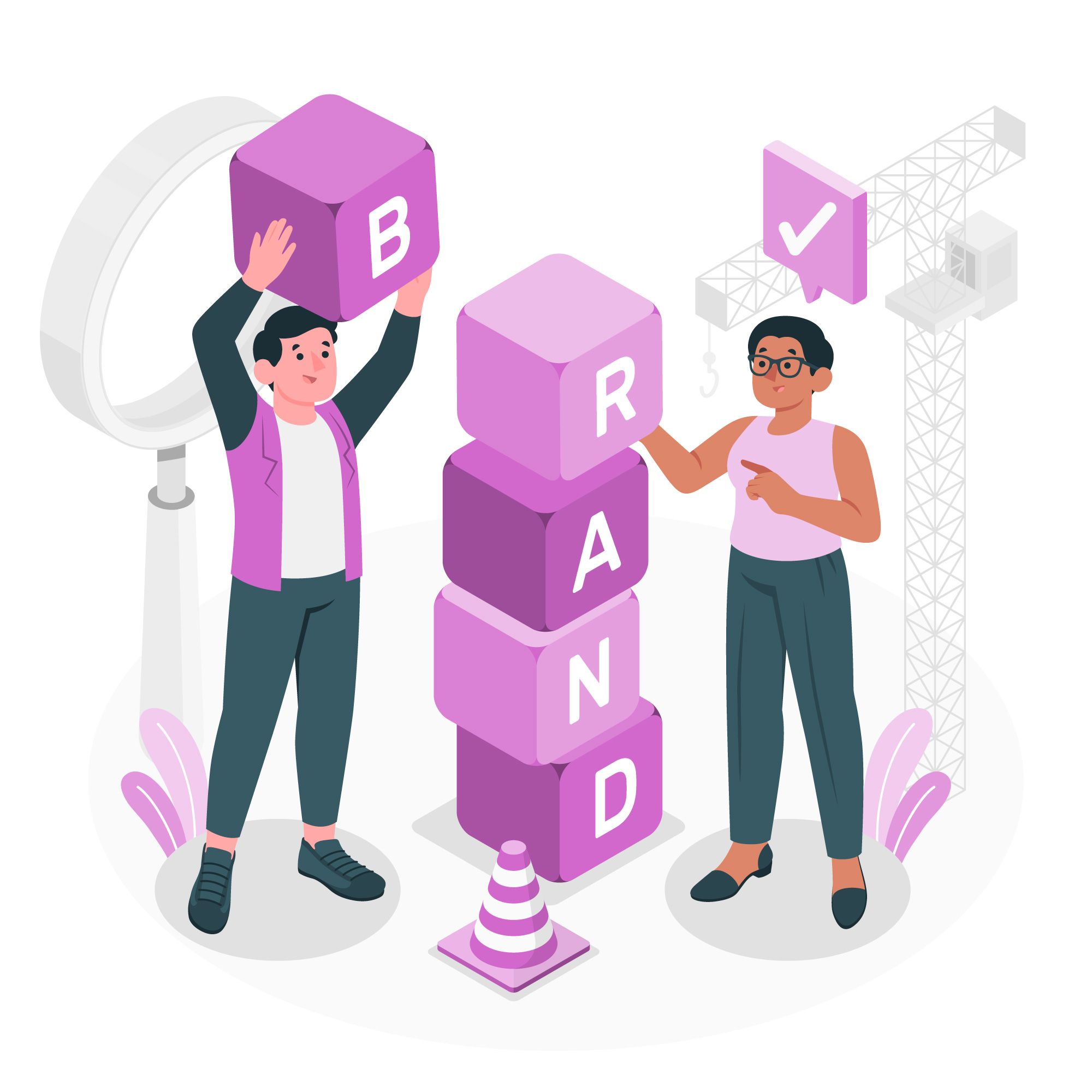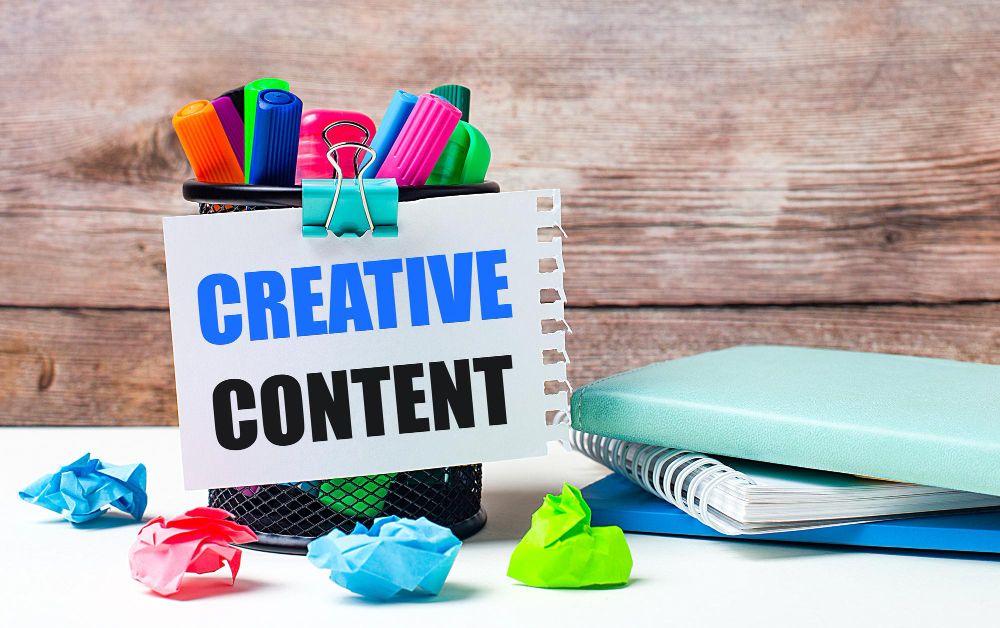

Aniket Warty
Director at Atlantis Inc
Money
Never Sleeps
Aniket Warty is a serial entrepreneur with a passion for building businesses from scratch. He specialises in online gaming, e-commerce, and IT, and is the Director and Board Member of Atlantis Inc, a Venture Capital and Private Equity company based out of the US. Aniket has the unique ability to work in proactively diverse and inclusive organisations across industry types, niches, geographic or linguistic variants. He’s always on the lookout to transform the next innovative idea into a sustainable business that has the vision and foundation to make a positive impact on the world.
Associated With












Latest

Why Are Founders Afraid to Talk About Exit Strategies?
Each day, you'll see a new startup entering the market. However, most of them meet the same fate of getting acquired instead of launching an IPO (Initial Public Offering). So, why don't founders think or talk about three exit strategies? As more startups meet the same fate, it begs the question, what are the things stopping the founders from talking about the future of their startups? In this article, we'll discuss some of the common myths and biases that come the way of founders that stops them from thinking ahead. ***Why Having an Exit Strategy Is Vital?*** While most entrepreneurs know that the ultimate fate of a startup is acquisitions, they don't seriously think about the exit plan. They will only focus on it when there is no other option left on the table except for selling the startup or if the acquirer has a lot of interest in their startup. Consequently, they cannot leverage the vital strategic opportunities to help them get a better result out of the deal. The ideal way out for entrepreneurs in this situation is to plan an exit strategy years before the acquisition takes place. This way, they will have a clear idea about where they plan to stand when it is time to sell the business. But if it is so important for startups to devise an exit strategy, why are they neglecting it? The simple answer is that many myths circulating in the startup community make it difficult to discuss exit planning. ***Reasons That Prevent Founders from Talking About Exit Strategies*** Creating and implementing an exit plan requires a collective effort from all the stakeholders. However, a few myths and reasons make it impossible for founders to discuss exit planning. Understanding them will allow entrepreneurs to make the most out of the final sale for their startup. **Focusing on Current Rather Than the Future** Generally, entrepreneurs have a lot on their plate to deal with, making it impossible for them to focus on the future. So, most entrepreneurs don't consider strategic planning necessary for their startup. Moreover, they tend to look at the near, short-term gains instead of focusing on the bigger picture. Therefore, they continue to ignore future risks and rewards. It explains why most entrepreneurs don't spend too much time building an exit strategy. The current bias prevents entrepreneurs from focusing on long-term planning. As a result, it leads to a strategic failure that can cost entrepreneurs their startups. If you don't talk about a particular thing, we cannot figure out ways to improve. The same is the case with strategic planning, as entrepreneurs fail to discuss an exit plan for their startups. **Too Much Optimism** While optimism is critical in helping entrepreneurs achieve their goals, it can soon raise a false sense of self-confidence. Even though most entrepreneurs know how difficult it is for new businesses to sustain, they don't apply the same risk in their situation. Most people show too much optimism regarding the probability of success. Consequently, they don't consider that the most likely outcome would be to go toward an acquisition. They're likely going to consider focusing more on taking the company public. That is where the problem starts since no entrepreneur would think or talk about building a strategic exit plan since they don't have a realistic idea of their startup's prospects. The ideal thing that entrepreneurs can do to deal with these issues is to develop a long-term strategy about the possibilities of a strategic sale as the final fate of their startup. Not just that, but they also need to continue making necessary changes to their plan by understanding the new data about their growth, evolving market conditions, and the changes in their industry. **The Myth of Acquisition Failures** As we read and hear about failed acquisitions, it casts a bad light on this choice and spreads a misleading and false narrative. Entrepreneurs have a common misconception that acquisitions can negatively impact shareholder value and won't help them accomplish their goals. Therefore, this misconception makes it difficult for startups and entrepreneurs to focus on selling their businesses. They won't consider the acquisition a viable option to achieve their company's goals and fulfill their aspirations. However, that is different from the result of most of the acquisitions. Entrepreneurs should research the actual data to understand the chances of acquisition failure. It will allow them to discuss an exit strategy with their shareholders since they can respond to the entrepreneurs' queries. **Having a Strategic Plan Hampers Innovation** Since innovation is a key factor behind a business's growth, many entrepreneurs believe that having an exit strategy will take away the motivation to bring something new to the table. Entrepreneurs fear that having an exit strategy would make it a favorable option to get out by selling their business and not having to deal with the difficulties. However, that is not the case since there is no research or evidence to back the claim that strategic planning to reduce the risk can impact innovation. However, there is growing evidence that excessive stress and pressure can hamper entrepreneurs' ability to think innovatively. Not just that, but it can also negatively impact their mental health and lead to burnout and other issues. An important thing to note is that entrepreneurs with excessive stress and pressure can find it hard to develop innovative ideas. The stress of risk and failure hampers the ability to think outside of the path. With a viable exit plan in position, the startups have a much better regarding what to do if things start to go south. It has a "panic button" effect, meaning they have a backup option to control or avoid a stressful situation. Since the entrepreneurs and their teams will have less stress, they can put forth the most creative ideas on the table. While there is always risk involved in entrepreneurship, it is not necessary to stay under excessive pressure of risk and failure to drive entrepreneurial passion and commitment. Instead, being passionate and stress-free allows them to work on something that can yield fruitful results. **Dealing with Investors** Venture investors are more likely to invest in businesses that desire to take risks and create something. They like to engage with entrepreneurs that have a mission of building a business at scale. Also, they want entrepreneurs to have a persistent dedication to their startups, so they stick with them in times of difficulty and hardships. Since businesses have to deal with hardships, there needs to be a clear and concise accord between the investors and entrepreneurs to take relevant actions and survive through thought times. Investors don't prefer to work with entrepreneurs with a built-to-flip since they fear individuals won't have the drive and perseverance to develop innovative ideas. They believe entrepreneurs won't come up with different ideas to deal with the inevitable obstacles. Therefore, investors don't prefer to talk about having a serious plan with the entrepreneurs about a strategic exit plan. Nevertheless, entrepreneurs must carefully understand and develop the right strategy to deal with this issue. It is best to create a proper context by understanding the investors' concerns and addressing them before discussing exit plans. The optimal approach is to discuss the benefits both parties can get working on a solution that is in the best interest of the entrepreneurs and the investors. An important thing for entrepreneurs to note is that they need to collect relevant data, test their theories, and collect relevant data to make clear long-term strategic options. Even if the investors and entrepreneurs have the ultimate goal of launching an IPO for the business, it would be best to have a strategic acquirer as a standby option. It will improve the overall valuation of the IPO. ***The Bottom Line — Talking About Exit Strategies*** As an entrepreneur, you want your business to reach the pinnacle of success. However, this doesn't mean you ignore the ground facts and turn a blind spot to the realistic view of your business. Therefore, it is vital to have a proper exit strategy to ensure that you can leverage the opportunity when selling your business. Designing and implementing an exit strategy beforehand will increase your chances of success and survival in the long run. The first thing that you need to do is discuss with your stakeholders so they are open to discussing creating an exit strategy. Understand their concerns and address their issues before you decide on moving to the next step. An effective approach to creating strategic planning with all the stakeholders on board will help steer your business out of tough times.

By Aniket Warty
26 February 2025
6 Min Read

How To Set The Best Brand Values And Why It's So Important
Thanks to modern connectivity, there has never been a more exciting time to propel something unique before the masses. Today's world is filled with exciting and dynamic companies offering an abundance of choice to their global audiences. However, all of that opportunity comes with a cost, because brands also need to go the extra mile to stand out from the competition. Fortunately, conceptualizing an awesome set of brand values is a brilliant place to begin! Listing out brand values might sound like a corny marketing gimmick to some, but when rooted in authenticity, this powerful tactic can crank the brand in question's prestige up to the max. The reason for this level-up is that [82% of consumers](https://consumergoods.com/new-research-shows-consumers-more-interested-brands-values-ever) want the values of the brands they buy from to mirror their own. That means that getting brand values right and sending them out into the consumer eco-system truly can make all the difference. But marketers beware, a cookie-cutter approach to this important element of branding isn't the way to go. The best brand values are crafted and tailored to the company in question, its audience, its employees, and its long-term goals. With all of that in mind, what goes into creating truly epic brand values? Today we're going to take a whistle-stop tour of all things brand values-related, including why they matter, some great examples, and how you can start formulating yours today. ### What Are Brand Values? A simple way to understand the function of brand values is to consider your own personal values as a human being. We each have a number of beliefs and principles that help us navigate through this world. When it comes to establishing a rockstar of a business, a core set of defining values can be immensely useful for enabling that enterprise to act in a cohesive and consistent way. So, even if the brand is driven by thousands of people, it operates as if it has a single personality and matching moral compass. Brand values are a distillation of the beliefs or ideals that steer a company's actions, laid out in an easy-to-digest way. What's more, they also allow the public to quickly identify if the brand is in step with their own personal perspective, which can help them decide if they want to stick around and shop. Depending on the brand and its target audience, the values they choose may include things like environmental commitments, customer care standards, diversity and equality, speed and efficiency, privacy protection, and more. ### Why Do Brand Values Matter? As we mentioned, the vast majority of consumers prefer to seek out brands whose values align with their own. However, when it comes to showcasing compelling brand values, it isn't enough to talk the talk—businesses have to walk the walk too. Because alongside seeking out calibrated values, today's customers are serious about seeing authenticity too. How vital is it for your brand to dazzlingly convey its authenticity in lights? Well, as it happens, [88% of contemporary consumers](https://www.oberlo.com/blog/branding-statistics) consider authenticity to be a key factor when considering which brands to support. This means that your brand needs to not only outline a clear and relevant set of values, but also draw from them daily in every aspect of what you and your team get up to. ### How Brand Values Can Benefit Your Business There is nothing like a bright and bold set of brand values to help a company build an unbreakable bond with its customer base. However, there are even more reasons to prioritize really dialing down the best values that you can. Here are some of the ways that your efforts will be rewarded: **1. Strong Brand Values Entice New Customers** Research from Harvard Business School professor Gerald Zaltman sheds more light on why demonstrating values is so important for connecting with customers. In his book, [How Customers Think: Essential Insights into the Mind of the Market](https://hbswk.hbs.edu/archive/how-customers-think-the-subconscious-mind-of-the-consumer-and-how-to-reach-it), he shared that “95% of our purchase decision-making takes place in the subconscious mind.” This means that even our most practical purchasing choices may be more rooted in emotion than we realize. Knowing this, it is easy to imagine why communicating brand values from the get-go is so critical to securing those key first-time purchases from customers new to your brand. When values are not only placed front and center, but also laced throughout marketing messages on social media and beyond, subconscious consumer confidence is far more likely to be inspired. **2. Your Brand's Values Will Attract the Right Talent** Amazing people always serve as the foundation for incredible brands, so how can a top-notch set of brand values help you bring the right people into the fold? For sure, it helps to know that [60% of job seekers](https://www.mccannsynergy.com/10-employer-branding-statistics-for-2022/) will choose a place to work based on their beliefs and values. This means that well-defined values can help you onboard the type of talent that will drive your business toward its next epic destination. In contrast, when values are either poorly defined or not adhered to, you can anticipate recruitment that misses the mark, stalled productivity, and a higher employee turnover. So yes, the best way to attract and retain unbeatable talent is to ensure that your brand values are reflected in the daily experiences of your team. This will ensure that they get to step into an engaging working environment that they can feel truly passionate about, and you get to share in the bounty of their journey. **3. Brand Values In Action Build Lasting Customer Loyalty** Well-crafted brand values do so much more than simply tempt the kind of customers you want to come and check out your business today. Crucially, when those values are proudly ever-present in the way your enterprise operates, they can ensure that those customers also climb aboard for the long haul. Over time, whenever consumers see the values that first attracted them to a company upheld and honored, this forges trust, which in turn transforms into loyalty. When it comes to creating stable and enduring business success, this mighty, values-driven, and mutually beneficial brand-consumer relationship simply cannot be beaten. **4. Clear Brand Values Will Help Your Team Synergize ** Without a guiding set of tenets to serve as a compass, any group of people can begin to drift off mission. That's exactly why establishing core brand values is so essential for keeping teams on task. Better yet, when businesses make a point of highlighting to employees how the work they do ties directly into the values that the brand represents, they can anticipate greater engagement and productivity. **5. Epic Brand Values Will Guide Your Business Forwards** Not only can brand values serve as a navigational tool for employees, but also for critical leadership decision-making as your company expands and evolves. Every decision, large or small, can be held up against your brand's guiding values to ensure that it is fully in alignment. This will ensure simultaneously that the company stays on track and that customers aren't caught off-guard by a sudden change of tack. ### Inspiring Examples of Brand Values Curating the most poignant values for your brand means striking a balance between what you as a company want to achieve and a deep understanding of your audience. While some values are likely to be more niche, others can be much more broadly relevant. For example, these days, [66% of consumers globally](https://www.businessnewsdaily.com/15087-consumers-want-sustainable-products.html) consider sustainability when they make a purchase, making earth-friendly brand values particularly meaningful. But let's sniff out some more ideas to draw from. Here are some inspiring examples of big-name brands with brilliant values to get your juices flowing: **Apple** American technology company Apple's late founder and CEO, Steve Jobs, made an excellent point when he shared: “Marketing is about values. It’s a complicated and noisy world, and we’re not going to get a chance to get people to remember much about us.” As such, the company offers an excellent example of clear and concise brand values in action, focusing on a list of core values that serve as a firm foundation for [its ethical operations](https://www.apple.com/compliance/): • Accessibility • Education • Environment • Inclusion and Diversity • Privacy • Racial Equity and Justice • Supplier Responsibility **Ben & Jerry's ** The [brand values](https://www.benjerry.com/values) of iconic ice cream company Ben & Jerry's build upon their ambitious tagline: “We believe that ice cream can change the world.” Keeping things even simpler than Apple, they lead with just three clear and contemporary values: ▪ Human Rights & Dignity ▪ Social & Economic Justice ▪ Environmental Protection, Restoration, & Regeneration **Adidas** Globally popular sports brand Adidas cleverly divides [its brand values](https://www.adidas-group.com/en/about/profile/) into three separate concepts. While striving to be a “credible, inclusive, and sustainable leader” in their industry, Adidas keeps this trio of things in mind: • Brand Purpose: “Through sport, we have the power to change lives.” • Brand Mission: “To be the best sports brand in the world.” • Brand Attitude: “Impossible is Nothing” ### How to Choose the Right Values for Your Brand The values that serve as a guiding light for your brand should unite as something that you and your team come back to again and again. To make them effective, it's important to minimize the fuss and maximize the clarity. For your team to consistently live your brand values, you'll ideally want to choose around 3-5 core values that are easy to internalize and incorporate. Here are some further brand value examples that might inspire: • We prioritize sustainability • We embrace diversity • We support our local communities • We keep things simple and efficient • We deliver outstanding customer care • We stand for inclusion • We never compromise our standards • We elevate our employees • We're always here when you need us • We see your win as our win • We encourage self-expression • We give back with green initiatives These are all strong starting points, but until you truly make them your own, they won't have much substance. Ultimately, the values that you land upon must be tailored, fully but simply articulating your brand's passions, goals, and personality. Plus, they aren't something to plonk on your website before getting back to business as usual—they will exist to be a touch-point that ties into everything you do. Here are a few handy exercises to help you formulate your ideas: **1. Consider Your Own Big 'Why'** Why did you start your company in the first place? What did you want it to stand for, and how can that be reflected in its guiding principles moving forwards? **2. Do Some Market Research** What are the brand values advertised by your competitors? Have a sneaky peek to see what's working for them, and perhaps more critically, what they have missed that could give you an edge. **3. Talk to Your Customers** If you don't ask your audience directly, you're really only guessing. Survey your customer base to discover what really matters to them. Next, you can figure out how to incorporate what they share into your brand's values and identity. **4. Get Your Team Brainstorming** All too often, leaders believe that their brand stands for one thing, only to realize that their team are on an entirely different page. Inviting team members to join in this critical conversation can be revealing. Your employees may mirror and inspire you, or they may spotlight a need for improvement that a new set of brand values can fuel. Once you've drawn together a decent amount of insight into how you, your audience, and your employees currently perceive your brand—plus any potential market opportunities—you can begin conceptualizing and refining your short and sweet list of authentic and powerful core brand values. ### What's the Difference Between Brand Values and Brand Guidelines? You might have come across the term brand guidelines and wondered how it differs from brand values. In reality, these two things are not quite the same but are intimately related to one another. While brand values are the beating heart of any savvy company's identity, brand guidelines are a tool that can be used to expand upon those values for greater specificity and consistency. When it comes to interpreting strong brand values into a more directional set of brand guidelines, it helps to go value-by-value, creating a handful of guidelines for each one. Here's an example of this idea applied: **Brand value:** • We elevate our employees **Brand guidelines:** • We ensure that all employees receive quarterly one-to-one feedback • We provide high-caliber training at regular intervals • We have an open-door policy for ideas, innovation, and constructive criticism • We provide employees the opportunity to grow and progress In this way, brand guidelines can be used to translate the values that steer your company into actionable and measurable strategies without watering them down. This leaves space for evolution while supporting that all-important central consistency. Which is a good thing, no doubt. Because research suggests that brands maintaining consistency in their presence enjoy [an increase in revenue of 33%](https://www.lucidpress.com/pages/resources/report/the-impact-of-brand-consistency). **The Brand Values Takeaway** A well-thought-out and implemented set of brand values can have a powerful impact on steering the course of any enterprise toward success. To be effective, they must be tailored to the company, based on genuine insight, rooted in authenticity, and woven throughout everything that the brand puts out into the world. When these aims are achieved, customers and employees are sure to be more engaged—not only today but also in the long run. Vitally, that all adds up to a recipe for enduring rockstar brand status. So, if you don't already have inspired brand values in place, it's time to get brainstorming!

By Aniket Warty
04 September 2024
10 Min Read

How to Build B2B Brand Success by Standing Out on Social Media in 2024
Every day, social media serves up a platter of possibilities for contemporary marketers thanks to the sheer scale of its captive audience. According to data from Statista, [almost 4.9 million people](https://www.statista.com/statistics/278414/number-of-worldwide-social-network-users/) use social platforms around the world and that number is projected to rise by another couple of million by the end of the decade. It's common sense that marketing to end consumers in this vast and sprawling digital ecosystem would be a savvy idea, but what about harnessing the juggernaut power of social media to market to other businesses? Happily, if you want to level up your B2B marketing, platforms like Instagram, LinkedIn, Facebook, and Twitter are just as advantageous for you as they would be for your direct-to-consumer counterparts. If you think about it, this welcome news is hardly surprising—because a whopping [93.79% of businesses](https://www.businessdit.com/social-media-for-business-statistics/) are actively pursuing their own marketing efforts on the very same platforms. It stands to reason that if you want to get their attention, you can meet them right there on the playing field! Yes, social media is a prime ally for achieving success as a B2B brand, but plenty of other businesses will be just as clued in on the opportunities to be seized. So, how can you get the upper hand? Let's get to grips with some stellar strategies to help your business stand out from the crowd. ### What Makes B2B Social Media Marketing Strategies Different? Long ago, in the earliest days of social media, platform creators dreamed of providing virtual spaces where friends and family would be able to connect and share, and advertisers would be able to frolic. However, next, something truly interesting happened. Businesses began claiming their own social media presences and personalities, connecting with customers more affordably, broadly, and meaningfully than ever before. This was marketing magic in action—a place where audiences and brands could interact directly and slick campaigns could go viral, achieving massive reach without worrying about a cost per click. It's no shock that today's brands spend a pretty decent chunk of their overall marketing budgets on social content creation and campaigns. It's also no revelation that in the current economic climate, businesses are managing their spending wisely. This year, roughly [58% of B2B marketers](https://resources.integrate.com/all-resources/the-state-of-marketing-budgets) in the UK and US anticipated a marketing budget that is equal to or less than in 2022, but despite such stagnation, B2B brands are deciding to [serve up a larger budgetary slice](https://www.slideshare.net/christinemoorman/the-cmo-survey-highlights-and-insights-report-september-2022) to their social media teams. If social media is the place to be for B2B branding, what do you need to know about this particular sub-category of marketing? Crucially, it's important to recognise that the businesses you want the attention of are hustling just as hard as you are—and they'll respond to messaging that reflects that. ### 10 Essential Tips to Help Your B2B Brand Stand Out on Social Media Digital channels such as social media are poised to become the setting for [80% of B2B sales interactions](https://www.gartner.com/en/sales/trends/future-of-sales) by 2025, so let's look a little further into how you can hone that hustle of yours with the needs of other businesses in mind. #### 1: Make Your B2B Social Media Marketing Human With the rise of chatbots, automation tools, and AI content generation, it's easy to get carried away with the gloss of artificiality. However, as useful as these tools may be, a human touch can be a powerful thing when it comes to forging more genuine B2B connections. Research from LinkedIn highlights that [75% of B2B decision-makers turn to social media](https://business.linkedin.com/sales-solutions/social-selling) to size up whether a purchase is right for their enterprise. They'll be looking for shared values, transparency, brand authority, and outstanding communication. This makes a human presence—whether it's the voice that shines through your posts or the courteous comment replies—an impactful one indeed. A great way to showcase the people behind your brand is to place leadership and employees in the spotlight from time to time. As an added bonus, this can double as employer branding, attracting new talent while giving your current team a greater sense of autonomy. #### 2: Strategically Differentiate to Stand Out From the Competition Your B2B brand is getting busy on social media, but as we mentioned, so are most other businesses—including your direct competition. These days, setting up your social profiles and posting once in a while isn't likely to cut the mustard. You need to discover an interesting edge that will allow your presence to shine the brightest. When novel messaging and creative but consistent visuals are combined, the results can be potent. But to get these ingredients right, you need to understand your social media niche and curate in the right direction. So start by asking who will engage in your content and why. What needs will your business address for theirs and how can you clearly communicate that value? From that point, you can begin to identify how to differentiate your B2B brand and product marketing from competitors' without veering off message. #### 3: Position Your Social Media Pages as First Points of Contact Chances are, you've put in some primo effort to get your website's SEO up to scratch. It represented a solid investment because organic web traffic is always a solid return. However, now the time has come to invest the same kind of might into transforming your social media pages into the kind of first-contact landing pages that you can truly be proud of. Why is this important? Well, young consumers are increasingly using social media to track down what they need. [40% of Gen Z use Instagram or TikTok](https://techcrunch.com/2022/07/12/google-exec-suggests-instagram-and-tiktok-are-eating-into-googles-core-products-search-and-maps/) to look things up and even Google's execs aren't exactly happy about it. Fortunately for your B2B brand, this is something that you can leverage to your advantage. The place to start is sprinkling smart keywords through your profiles and posts, before getting to grips with how to hashtag #likeapro. It's also worth regularly running your own industry-relevant social media searches to figure out how to boost your visibility even higher. #### 4: Build Your Community to Boost B2B Brand Authority A little earlier, we touched on the importance of the human element on social media as well as the power of communication. These are concepts that you can really pick up and run with by focusing on forging community, stimulating stronger audience relationships and customer loyalty along the way. In fact, according to HubSpot, [90% of social media marketers](https://blog.hubspot.com/marketing/brands-social-media-communities) say building an active online community is critical to success in 2023. Here are some B2B community-building options to explore: • Get active in social media groups that are relevant to your B2B niche • Create your own groups and establish yourself as an industry thought leader • Drop high-value content and free resources to make your business indispensable • Jump into authority-focused digital spaces like Reddit and Quora • Keep comments-based dialog flowing with your day-to-day audience #### 5: Use Multimedia to Keep Your Social Feeds Fresh Social media continues to evolve at flat-out speed and it's essential for B2B brands to keep up. When Instagram first debuted the Reels feature in 2019, nobody could have predicted how quickly short-form video would come to claim space on the platform. Today, users increasingly get to choose how they use their go-to social media platforms, including whether they pay more attention to images, linked posts, polls, memes, video content, or SnapChat-style stories. Right now, according to Sprout Social, short-form video is [the most engaging type](https://sproutsocial.com/insights/index/) of in-feed social content—but that may change tomorrow. Clearly, there is an advantage to be claimed by mastering every format on your social media channels of choice. Crucially, a diverse multimedia offering will keep things fresh for your audience while ensuring that you don't drop out of view for the business decision-makers that you want to reach the most. #### 6: Balance Brand and Demand Marketing Undoubtedly, the right brand-building social media strategy will elevate both awareness and perception of your business among the minds that matter. However, there is another angle of marketing that should always be present in the mix and that is demand marketing. What do we mean by demand marketing? Well, vitally this carries us back to the idea of understanding the needs of your customers. As a business, you cannot create demand—you can only step up to meet it. Where brand marketing focuses on forging epic associations that wire and fire, demand marketing focuses on demonstrating an understanding of customer needs and an ability to provide optimal solutions. The B2B gurus at LinkedIn recommend that brands [divide their marketing efforts pretty evenly](https://business.linkedin.com/marketing-solutions/success/insights-and-research/brand-to-demand?trk=lms-blog-b2b&src=bl-po) between these two endeavors. #### 7: Monitor Your Market Niche to Stay One Step Ahead We've ticked off talking about the importance of differentiating your B2B brand from its competitors, but there is more to be uncovered in keeping tabs on others operating within your social media market niche. Because their target audience is yours and vice-versa, there is much to learn through simple observation. Soon, you'll be able to spot which of the opposition's campaigns, content strategies, or even comments get the most engagement and which fall flat. Not to mention, you'll also be able to sniff out sneaky opportunities. For example, if there's a buzz in the headlines about something relevant to your industry, you'll definitely want to jump on it—but if your competition drops the ball in this area then you'll likely be able to nab some of their limelight by taking the lead on a trend. #### 8. Leverage Audience Insights to Your Advantage Having initially done the work to understand your audience well enough to reach them, now you can make the most of social media analytics and dig even deeper. As the world's ultimate data gatekeepers, social media platforms thankfully have the sense to provide a bevy of information to businesses about how users interact with their content. Not only can this information allow you to confirm that things are working well, but you can also use audience insights to test different approaches to your B2B brand marketing. You'll need to identify the metrics that are going to be most useful and consolidate them between platforms, but from there you can analyze, discover, apply, and repeat. Yes, with analytics at your fingertips, you can zero in on the kinds of content to prioritize, where and when to post, and even which platforms are more worthy of your time. Thinking back to those limited B2B marketing budgets, there is no shame but in fact great wisdom in dialing in your social marketing strategy tightly so that time and money invested always provides the best possible return. #### 9. Set Clear KPIs Based on Your Core Objectives Speaking of metrics, have you already made friends with a handy set of key performance indicators? If not, it's time to find your new best buddies and get acquainted. These crucial data points are going to elucidate whether or not your B2B brand marketing strategy is a sure thing. Key performance indicators, or KPIs for short, are the measurables that any business can examine to better understand their progress. The best way to identify the right social KPIs for your brand is to think first about what you hope to achieve on these platforms and work out from there. Your goals might include things like: - Increase brand awareness - Drive website traffic - Build trust and authority - Generate leads - Drive conversions - Inform customers - Boost customer retention - Attract job applicants Once you know the whys behind your social media marketing efforts, you can much more easily pinpoint the right metrics to track. For example, social likes and shares are healthy indicators of growing brand trust and authority, while tracking your audience from your latest social posts through to conversion will let you illuminate what it was that sealed the deal. #### 10. Regularly Re-focus Your Targeting For most B2B brands on social media, marketing dispatches will be made up of a mix of organic and paid content. When it comes to your paid campaigns, social media platforms are increasingly facilitating laser-sharp ad targeting, allowing you to point and pull the trigger with curated content for the exact kind of businesses you want to speak to. But you can also think of your organic content as targeted content. By factoring in things like the types of professionals you hope to reach, when and how they use social media, and what will make them sit up and pay attention the most, you can make sure your messaging always land. Dividing your audience into segments, catering to each segment in turn, and consistently monitoring to see if a tactical shift is necessary will help you hold your relevance overall. At the end of the day, as specific as B2B brand marketing may be in some regards, one thing is certainly universal. Being a champion within the varied worlds of social media means providing something that people truly want to scroll to—something that gives them that all-important dopamine hit while ideally anchoring them to your business for the long haul. If you make that a central tenant to your hustle while harnessing the above tips, you should soon find yourself climbing the social media podium towards success!

By Aniket Warty
21 August 2024
10 Min Read
How to Build B2B Brand Success by Standing Out on Social Media
By Aniket Warty | 26 October 2023

Unify Your Brand Strategy With These Superhero Content Creation Ideas
By Aniket Warty | 18 April 2023

How Will AI Impact Branding In The Future?
By Aniket Warty | 03 April 2023

Top Featured Articles
01

5 Essential Steps to Prepare for a Successful IPO
By Aniket Warty | 10 May 2017

02

IPO or M&A? How Venture Capital Shapes a Startup’s Future
By Aniket Warty | 15 March 2023

03

How to Make Your Brand a Hit With Women (Without Excluding Men)
By Aniket Warty | 28 February 2023

04

“Learning to Fly” by Pink Floyd
By Aniket Warty | 15 December 2022

05

‘Feel’ – Robbie Williams
By Aniket Warty | 14 January 2023

06

How Will AI Impact Branding In The Future?
By Aniket Warty | 03 April 2023


